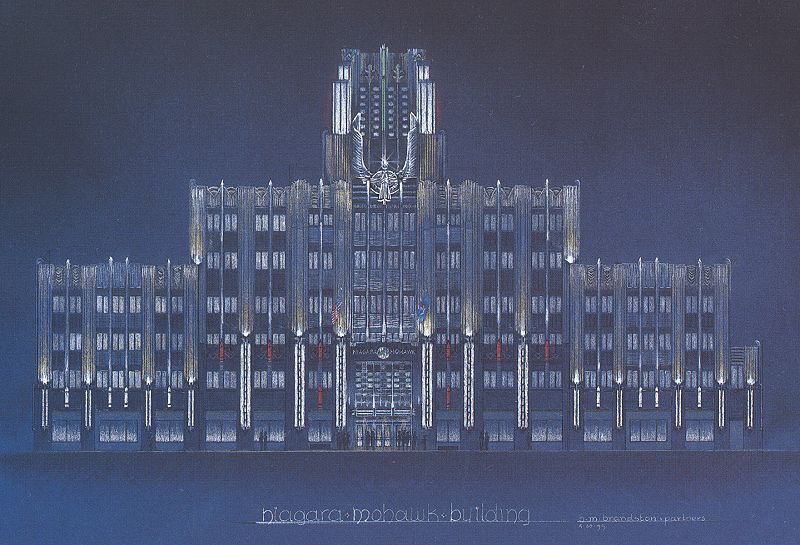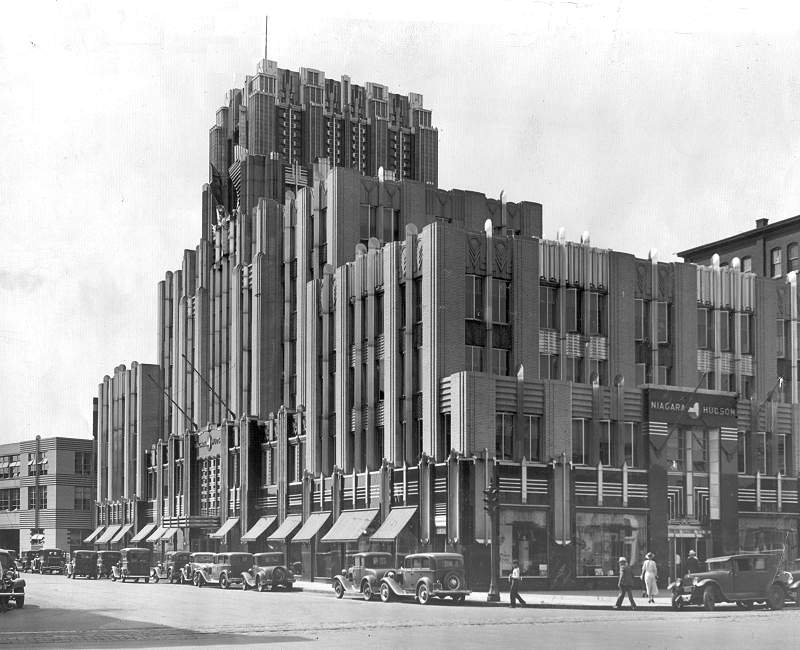Though I lived in Syracuse for a couple of years while going to school, I only ever saw the NiMo one time. I've got a terrible sense of direction and I don't generally stray far from home, so it takes me a long time to really learn my way around a city unless I make a concerted effort; hell, there was a downtown comics shop that Steve and I must have visited a dozen times, and I could never find it without his help. And so with the NiMo—that's the Niagara Mohawk Power building—I just never got down to that end of Erie Boulevard, I guess.
I no longer remember the exact circumstances under which I first saw it—I remember I was driving around lost, but that could have been almost any day; I think it was night-time, and I think I was looking for Rosie O'Grady's Blind Pig Saloon. In any case, I remember how this huge and unexpected Art Deco monster loomed up, a shocking concoction of planes and angles and figurative filigree. I remember I slowed down and nearly ran off the road. I saw something like this:
You've got to keep in mind how absolutely unprecedented this seemed, in the bleak post-industrial cityscape that surrounds it. Imagine a Moorish castle plopped down in the slag-heaps of Pittsburgh—and then forgotten: that's how the NiMo seemed—like an alien artifact left to moulder in an unlikely spot. It gave the impression, in that dusty, gray concrete vista, of being overgrown with weeds—even though there wasn't a patch of green in sight. It was and remains a working building, yes, but it somehow seemed abandoned. Remember the phone booth in the desert, that mini-meme of the Web's early days? The NiMo gave me a similar feeling of mingled wonder and loneliness.
I had no inkling of its historical and architectural significance, then. I could never find it again, and I really didn't want to: in the years since, I became half-convinced that I'd dreamed the whole thing.
But no. The NiMo has been rediscovered, restored, and presented again to the world—and better than I'd ever imagined
For when I saw the NiMo, in the late 1980s, it was darkened: but in its original conception—and in the recent restoration—this temple of electricity, as befits its role, is constructed not just of stone and steel, but of light.

I think of the end of Close Encounters, when the Mothership—which up 'til then has been known and understood only in dreams, obsessions, and prophecies—swells up over the butte, exploding from the world of the visionary into the realm of the real, huge and solid and wondrous and of breathtaking craftsmanship: a bridge between worlds, crafted, like a vast Wurlitzer jukebox, as much from light and sound as matter.

